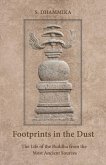When we think about genealogy, our minds often go straight to the basics: names, dates, and locations that help us map out our family trees. But beyond the vital records and census entries lies a deeper layer of understanding-one that gives life to the challenges and experiences of our ancestors. Exploring health conditions and causes of death is an essential but often-overlooked dimension of family history research. These details, found in death certificates, obituaries, and coroner's reports, add depth and context to the lives of those who came before us. However, deciphering these records isn't always straightforward. The language of death certificates from decades or even centuries ago often reflects the medical knowledge, cultural norms, and idioms of the time. Terms like "dropsy," "consumption," or "brain fever" may leave us scratching our heads, wondering what modern conditions they correspond to. That's where the International List of Causes of Death (ILCD) and its successor, the International Classification of Diseases (ICD), come into play. These systems were developed to standardize how mortality data is recorded, making it easier to understand and compare across different periods and regions. This book bridges the gap between these medical classification systems and the practical needs of genealogists. Whether you're a novice researcher or a seasoned pro, you'll find guidance here for interpreting the ILCD and ICD codes often found in older death records. These codes, once an enigma, are now valuable tools for understanding the health history of your ancestors and their communities. Start by diving into the history of mortality classification systems, tracing their evolution from the 19th-century Bertillon Classification to today's ICD framework. Along the way, you'll learn how these systems shaped public health practices, improved medial knowledge, and enabled researchers to track global disease trends. Next, focus on the practical side of genealogy. You'll discover how to locate death records, decipher the codes and terminology they contain, and navigate the changes in disease names over time. We'll also explore the cultural and geographic contexts that influenced which classification systems were used in different places and eras. To make this process even more accessible, the book includes a comprehensive reference section. Here, you'll find all of the ILCD and ICD revisions, key details about editions, and guidance on accessing these resources online. Also included are real-world case studies to illustrate how genealogists can use these tools to uncover stories hidden within cryptic death records. Of course, exploring the health histories of our ancestors comes with its own set of ethical considerations. We'll discuss how to handle sensitive discoveries with care and respect, ensuring that your family narratives honor both the privacy and dignity of those who came before you. The goal of this book is simple: to empower you to move beyond the basics of genealogy and uncover a richer, more human understanding of your family's past. By decoding the language of mortality, you'll not only gain insights into the challenges your ancestors faced but also create a more complete and compassionate picture of their lives. With the right tools and a little determination, you'll uncover stories that connect you more deeply to your family's history and, perhaps, to yourself.
Hinweis: Dieser Artikel kann nur an eine deutsche Lieferadresse ausgeliefert werden.
Hinweis: Dieser Artikel kann nur an eine deutsche Lieferadresse ausgeliefert werden.








